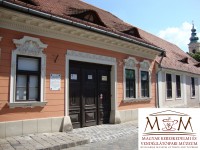XX. század De a láb mindig kéznél van kártyanaptár 1972
A fehér alapon ábrázolt kártya kibocsátó említése nélkül hívja fel a figyelmet az egészséges életmódra: XX. század DE A LÁB MINDÉG KÉZNÉL VAN, KOCOGJ! FUSS NAPONTA TÍZ PERCET TÍZ ÉVVEL TOVÁBB ÉLSZ. A kártyán zsúfolt nagyváros házait, sok járművet, repülőt, autót, buszt, villamost lehet látni. A járdán az egészségtelen környezetben egy fiatal nő és férfi fut az egészségéért. A kép tervezője ezúttal nincs feltüntetve.
en









